The Aluminium Design Manual is a comprehensive guide for engineers and designers, providing detailed insights into aluminium’s properties, applications, and design principles. It serves as a foundational resource for understanding material behavior, structural integrity, and best practices in aluminium-based projects, ensuring safe and efficient design solutions across various industries.
1.1 Purpose and Scope of the Manual
The Aluminium Design Manual is designed to provide engineers and designers with a detailed guide for working with aluminium in various engineering applications. Its primary purpose is to offer practical guidance on designing aluminium structures, ensuring safety, efficiency, and compliance with industry standards. The manual covers essential aspects such as material properties, structural design principles, and fabrication techniques, making it an invaluable resource for professionals seeking to optimize aluminium’s potential in their projects while addressing key challenges and opportunities in modern engineering.
1.2 Importance of Aluminium in Modern Design
Aluminium’s lightweight, corrosion-resistant, and durable properties make it a cornerstone in modern design across industries. Its high strength-to-weight ratio is crucial for transportation, construction, and consumer goods, enabling energy efficiency and sustainability. Aluminium’s versatility allows for intricate designs and cost-effective solutions, driving innovation in architecture, aerospace, and electronics. As a sustainable material, it supports eco-friendly practices through recyclability and reduced energy consumption, solidifying its role as a key material in contemporary engineering and design.
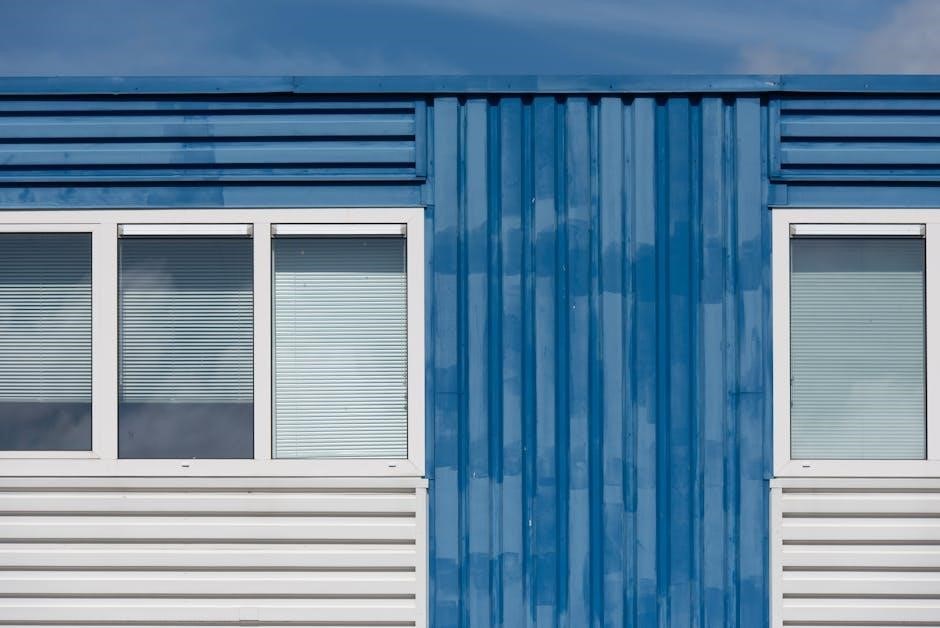
Fundamental Principles of Aluminium Design
Aluminium design relies on understanding its mechanical properties, structural behavior, and environmental interactions. Key principles include load capacity, stress analysis, and corrosion mitigation, ensuring safe and durable structures.
2.1 Material Properties and Characteristics
Aluminium exhibits high strength-to-weight ratio, corrosion resistance, and excellent thermal conductivity. Its alloys vary in mechanical properties, with some offering enhanced durability and weldability. Key characteristics include high ductility, resistance to fatigue, and adaptability to surface treatments. Environmental factors, such as moisture and temperature, influence its performance. Understanding these properties is crucial for selecting appropriate alloys and ensuring structural integrity in diverse applications.
2.2 Structural Behaviour of Aluminium Alloys
Aluminium alloys exhibit excellent structural behaviour, combining high strength with lightweight properties. They demonstrate elastic behaviour under initial loading, transitioning to plastic deformation beyond yield points. Their response to tension, compression, and bending varies based on alloy type and temper conditions. Factors like cross-sectional area and shape influence load distribution and resistance. Understanding these behaviours is essential for designing safe and efficient structures, ensuring optimal performance under various stress conditions while maintaining durability and reliability in engineering applications.
2.3 Corrosion Resistance and Durability
Aluminium alloys inherently possess excellent corrosion resistance due to a self-forming oxide layer that protects the metal from environmental factors. This natural barrier minimizes degradation in various conditions, including moisture and salt exposure. However, specific environmental factors, such as high acidity or alkalinity, can impact durability. Surface treatments like anodizing or coatings further enhance resistance. Proper material selection and design considerations, such as drainage and ventilation, are crucial to prevent corrosion and ensure long-term structural integrity in diverse applications.
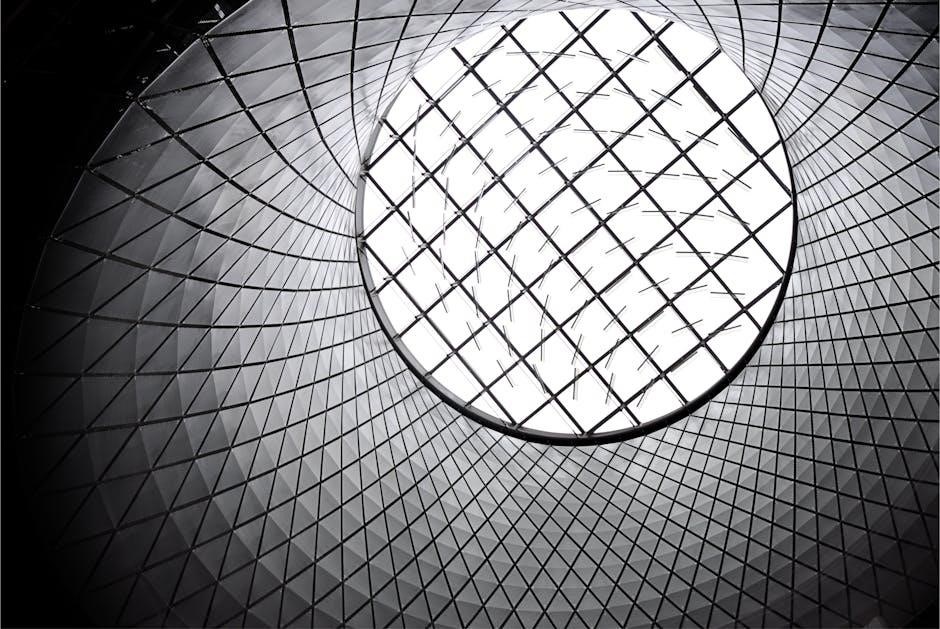
Aluminium Alloys and Their Applications
Understanding aluminium alloys is crucial for effective design, as different alloys offer unique mechanical properties and suitability for various applications. Common alloys like 6061 and 5052 are widely used for structural components, transportation, and marine applications due to their strength, weldability, and corrosion resistance. The manual provides detailed insights into alloy selection, ensuring optimal performance and durability in diverse engineering projects, from aerospace to consumer goods.
3.1 Common Aluminium Alloys for Structural Use
Aluminium alloys like 6061-T6, 5052-H32, and 7075-T6 are widely used in structural applications due to their high strength-to-weight ratio and corrosion resistance. Alloy 6061-T6 is popular for its weldability and is often used in transportation and construction. Alloy 5052-H32 is known for its excellent formability and resistance to marine environments, making it ideal for boat hulls and architectural features. Alloy 7075-T6, while less weldable, offers high tensile strength, making it suitable for aerospace and high-performance applications. These alloys are selected based on their specific mechanical properties and environmental requirements, ensuring optimal performance in diverse structural roles.
3.2 Selection Criteria for Aluminium Alloys
Selecting the right aluminium alloy involves understanding design requirements, environmental factors, and mechanical properties. Key considerations include strength, durability, corrosion resistance, weldability, and formability. Environmental factors like temperature, exposure to chemicals, and moisture also play a role; Cost-effectiveness and availability are additional factors. For structural applications, alloys with high tensile strength and resistance to fatigue are preferred. For marine environments, alloys with superior corrosion resistance are chosen. Ensuring the alloy aligns with manufacturing processes and project budgets is crucial for optimal performance and cost-efficiency.
3.3 Weldability and Joining Techniques
Aluminium alloys can be welded using various techniques, including MIG, TIG, and friction stir welding (FSW). Pre- and post-weld treatments are essential to maintain mechanical properties and prevent defects. Design considerations, such as joint geometry and material thickness, are critical for successful welding. Adhesive bonding and mechanical fasteners are also effective for joining aluminium components. Proper surface preparation and shielding gases are necessary to avoid porosity and oxidation. The choice of technique depends on the alloy type, application, and desired strength. Ensuring compatibility between materials and processes is key to achieving durable and reliable joints.
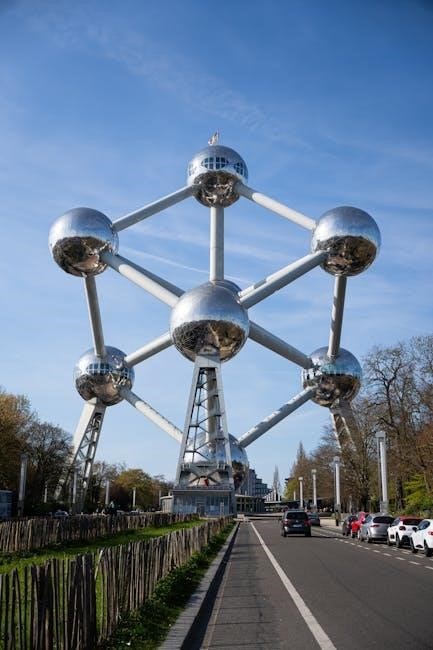
Design Considerations and Calculations
Load calculations, stress analysis, and deflection assessments are critical for ensuring structural integrity. Material weight, durability, and environmental factors must be considered to optimize designs effectively.
4.1 Load Calculations and Stress Analysis
Accurate load calculations are essential to determine the forces acting on aluminium structures. Stress analysis ensures that components can withstand these loads without exceeding material limits. Using the Aluminium Design Manual, engineers can apply formulas to calculate maximum allowable stress, considering factors like tension, compression, and bending. This step is crucial for preventing material failure and ensuring the structural integrity of aluminium designs in various applications. Proper stress analysis also aids in optimizing material usage, reducing weight, and enhancing performance.
4.2 Deflection and Buckling Analysis
Deflection and buckling analysis are critical for ensuring aluminium structures maintain their shape under load. The Aluminium Design Manual provides methods to calculate deflection limits and assess buckling risks. Deflection analysis ensures structural stability and functionality, while buckling analysis prevents sudden failures under compressive loads. Engineers use these calculations to design safe and efficient aluminium components, avoiding excessive deformation or catastrophic collapse. These analyses are vital for maintaining the integrity and performance of aluminium structures in various applications. Proper calculations ensure compliance with design standards and material capabilities.
4.3 Fatigue and Fracture Mechanics
Fatigue and fracture mechanics are essential for assessing aluminium structures under cyclic loading. The Aluminium Design Manual provides methodologies to evaluate fatigue life and fracture resistance. Fatigue analysis identifies potential failure points due to repeated stress cycles, while fracture mechanics examines crack propagation and material failure. Engineers use these principles to design durable aluminium components, ensuring long-term reliability and safety. Proper application of these analyses prevents unexpected failures in dynamic environments, such as transportation and construction applications, where repeated loading is common.

Fabrication and Manufacturing Techniques
Fabrication and manufacturing techniques are critical in aluminium design, enabling the production of precise, durable components. Key processes include machining, forming, and surface finishing, ensuring high-quality outcomes.
5.1 Machining and Cutting Methods
Machining and cutting methods play a vital role in aluminium fabrication, ensuring precision and efficiency. Common techniques include milling, drilling, and sawing, with tools optimized for aluminium’s softness. High-speed machining minimizes heat buildup, preventing damage. Laser and waterjet cutting offer precise, burr-free edges. Proper lubrication and tool selection are crucial to avoid tearing or galling. These methods are widely used in producing intricate components for aerospace, automotive, and construction industries, highlighting aluminium’s versatility in modern manufacturing processes and applications.
5.2 Forming and Shaping Processes
Aluminium can be formed and shaped through various methods, including extrusion, rolling, forging, and bending. Extrusion creates complex cross-sections, while rolling produces thin sheets. Forging shapes metal using compressive forces, ideal for high-strength parts. Bending involves shaping aluminium into desired angles using presses or brakes. These processes are enhanced by aluminium’s high ductility and malleability. Proper tooling and temperature control are essential to achieve precise shapes and avoid defects. These techniques are widely used in manufacturing components for aerospace, automotive, and construction, showcasing aluminium’s adaptability in forming intricate designs efficiently.
5.3 Surface Finishing and Coating Options
Surface finishing and coating options for aluminium enhance durability, corrosion resistance, and aesthetic appeal. Common methods include anodizing, which creates a protective oxide layer, and powder coating, offering vibrant, long-lasting finishes. Chromate conversion provides a corrosion-resistant base for painting. Sanding and polishing achieve smooth, reflective surfaces. Electroplating and thermal spraying are used for specialized applications. These techniques are crucial for ensuring aluminium components withstand environmental factors while maintaining their functional and visual requirements in various industries, from construction to consumer goods.

Sustainability and Environmental Impact
Aluminium’s high recyclability and energy efficiency make it a sustainable choice, reducing environmental impact while offering durable solutions for eco-friendly structures and transportation, lowering carbon footprints effectively.
6.1 Recycling and Reusability of Aluminium
Aluminium’s exceptional recyclability makes it a cornerstone of sustainable practices. Recycling aluminium requires only 5% of the energy needed for primary production, significantly reducing environmental impact. Its durability ensures long product lifecycles, and end-of-life recycling further conserves resources. The metal retains its properties through multiple recycling processes, making it endlessly reusable without degradation. This characteristic is vital for minimizing waste and promoting a circular economy, aligning with global efforts to reduce carbon footprints and enhance resource efficiency in construction, transportation, and consumer goods.
6.2 Energy Efficiency in Production and Use
Aluminium production has seen significant advancements in energy efficiency, with modern smelters using up to 40% less energy than older facilities. Recycling further reduces energy consumption by 95%, making secondary production highly sustainable. In use, aluminium’s lightweight properties improve fuel efficiency in vehicles and reduce energy demands in buildings. Its high thermal conductivity also enhances performance in heat exchangers and solar panels, contributing to overall energy savings. These efficiencies make aluminium a key material in achieving energy-related sustainability goals across industries.
6.3 Environmental Benefits of Aluminium Structures
Aluminium structures offer significant environmental benefits due to the material’s high recyclability and durability. Recycling aluminium requires only 5% of the energy needed for primary production, reducing greenhouse gas emissions. Lightweight aluminium extends the lifecycle of products like vehicles and buildings, lowering overall resource consumption. Its resistance to corrosion minimizes maintenance and replacement needs, further conserving resources. These factors make aluminium a sustainable choice, supporting eco-friendly construction and promoting a circular economy by reducing waste and energy use throughout its lifecycle.

Applications of Aluminium in Various Industries
Aluminium is widely used in transportation, construction, electronics, and packaging due to its lightweight, durability, and corrosion resistance, making it a versatile material for diverse industrial applications.
7.1 Aluminium in Transportation (Automotive, Aerospace)
Aluminium’s lightweight, high strength-to-weight ratio, and corrosion resistance make it essential in transportation. In automotive, it reduces vehicle weight, improving fuel efficiency and performance. In aerospace, its durability and resistance to fatigue enable aircraft structures to withstand extreme conditions. Aluminium alloys are used in engine components, chassis, and body panels for cars, while in aerospace, they are integral to fuselage and wing designs. Its recyclability further supports sustainable transportation solutions, making aluminium a critical material for modern automotive and aerospace industries.
7.2 Aluminium in Construction and Architecture
Aluminium’s versatility, strength, and corrosion resistance make it a preferred material in construction and architecture. It is widely used for facades, windows, doors, and structural components due to its lightweight and durability. Aluminium’s ability to be extruded into complex shapes enhances architectural design possibilities. Its high recyclability and energy efficiency also support sustainable building practices. In modern construction, aluminium is integral to creating energy-efficient, aesthetically pleasing, and long-lasting structures, making it a cornerstone of contemporary architectural and construction projects.
7.3 Aluminium in Consumer Products and Electronics
Aluminium’s unique combination of durability, conductivity, and aesthetics makes it a cornerstone in consumer products and electronics. From laptops and smartphones to household appliances, aluminium is used for casings and heat sinks due to its excellent thermal properties. Its corrosion resistance and lightweight nature enhance product longevity and portability. Moreover, aluminium’s recyclability supports eco-friendly manufacturing practices. This versatility ensures its widespread application in creating sleek, functional, and sustainable consumer electronics and everyday items, driving innovation and meeting modern design demands effectively.
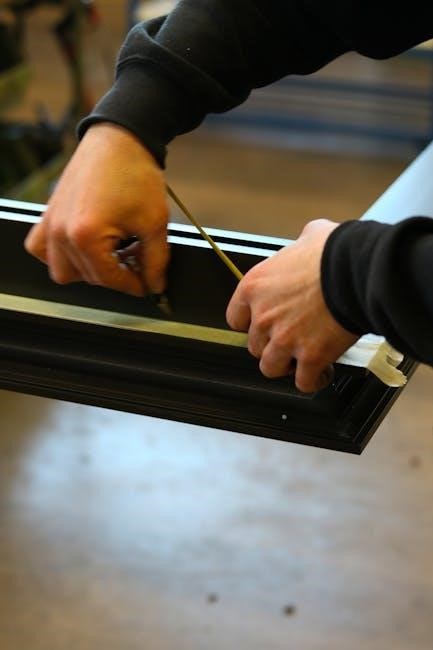
Case Studies and Real-World Examples
This section highlights successful aluminium structures, showcasing innovative designs and practical applications. Real-world examples demonstrate aluminium’s versatility, durability, and performance in diverse engineering and architectural projects.
8.1 Successful Aluminium Structures and Their Design
Notable aluminium structures exemplify innovative design and engineering excellence. Bridges, buildings, and transportation systems highlight aluminium’s strength-to-weight ratio and corrosion resistance. For instance, a fixed-free aluminium column, designed using manual equations, demonstrates structural efficiency. Channels, tubes, and angles are widely applied in construction, showcasing versatility. These real-world applications illustrate how aluminium meets modern design challenges, combining durability and aesthetic appeal. Such projects underscore the material’s suitability for complex engineering solutions, proving its value in contemporary architecture and infrastructure development.
8.2 Lessons Learned from Aluminium Construction Projects
Aluminium construction projects reveal critical lessons for engineers and designers. Addressing design limitations, such as stress analysis and corrosion mitigation, is essential. Troubleshooting fabrication issues, like welding defects, highlights the need for precise techniques. Proper alloy selection and surface protection are vital for durability. Collaborative problem-solving between architects and fabricators ensures project success. These insights emphasize the importance of adhering to design manuals and best practices, ultimately enhancing the reliability and longevity of aluminium structures in diverse applications.
8.3 Innovative Uses of Aluminium in Modern Engineering
Modern engineering showcases aluminium’s versatility through innovative applications. In transportation, lightweight aluminium alloys enhance fuel efficiency and performance in electric vehicles and aerospace. Renewable energy sectors utilize aluminium for solar panel frames and wind turbine components due to its corrosion resistance. Advanced manufacturing employs aluminium in 3D printing and robotics, leveraging its durability and conductivity. Additionally, sports equipment, such as high-performance skis, benefits from aluminium’s strength-to-weight ratio. These applications highlight aluminium’s adaptability and its role in driving technological advancements across industries.

Common Challenges and Solutions in Aluminium Design
Aluminium design faces challenges like corrosion, structural instability, and fabrication complexities. Solutions include applying protective coatings, optimizing design for load distribution, and using advanced welding techniques.
9.1 Overcoming Design Limitations and Constraints
Designing with aluminium often involves addressing limitations such as corrosion susceptibility, lower strength compared to steel, and thermal expansion. To overcome these, engineers utilize protective coatings, select high-strength alloys like 7075-T6, and employ design strategies that minimize stress concentrations. Additionally, advanced manufacturing techniques such as friction stir welding and precision machining help optimize structural integrity. By understanding material behavior and leveraging innovative solutions, designers can effectively navigate constraints and create robust, durable aluminium structures suitable for diverse applications.
9.2 Troubleshooting Common Fabrication Issues
Fabrication of aluminium components often encounters challenges such as warping during welding, porosity in castings, and stress concentrations. To address these, identifying root causes is crucial. Warping can be mitigated using controlled heating and cooling techniques, while porosity issues may require adjustments in casting methods or material purity. Stress concentrations can be minimized through design optimizations, such as rounding sharp edges. Regular inspections and non-destructive testing also help detect defects early. Implementing best practices in machining, welding, and surface finishing ensures high-quality aluminium products and reduces fabrication-related failures.
9.3 Mitigating Corrosion and Environmental Factors
Aluminium structures are prone to corrosion when exposed to harsh environments, such as marine or high-humidity conditions. To mitigate this, surface treatments like anodizing or applying protective coatings are effective. Environmental factors, including temperature fluctuations and chemical exposure, can also impact durability. Designing with drainage in mind and selecting alloys resistant to specific environmental stresses are key strategies. Regular maintenance, including inspections and recoating, further enhances longevity. Understanding and addressing these factors ensures aluminium structures remain durable and perform reliably over time, even in challenging conditions.
The Aluminium Design Manual provides a comprehensive guide to designing with aluminium, emphasizing its versatility, sustainability, and performance. As technology advances, future trends will focus on innovative applications and enhanced material properties, driving aluminium’s continued relevance in modern engineering and design.
10.1 Summary of Key Concepts and Best Practices
The Aluminium Design Manual emphasizes understanding material properties, structural behaviour, and corrosion resistance. Key concepts include load calculations, fatigue analysis, and sustainability. Best practices involve selecting appropriate alloys, ensuring proper weldability, and adhering to fabrication techniques. The manual also highlights the importance of recycling and energy efficiency, making aluminium a preferred choice for eco-friendly designs. By following these guidelines, designers can optimize aluminium’s potential, ensuring durable and efficient structures across various industries. These principles form the cornerstone of successful aluminium application and innovation.
10.2 Emerging Technologies in Aluminium Design

Emerging technologies in aluminium design include advancements in additive manufacturing, such as 3D printing, enabling complex geometries and lightweight structures. Researchers are also developing new high-strength, corrosion-resistant alloys. Sustainable manufacturing processes, like recycling and energy-efficient production, are gaining traction. Additionally, digital tools and simulation software are enhancing design accuracy and material optimization. These innovations are driving aluminium’s role in cutting-edge applications, from aerospace to renewable energy, ensuring its continued relevance in modern engineering and design.
10.3 The Future of Aluminium in Engineering and Design
The future of aluminium in engineering and design is poised for growth, driven by sustainability demands and technological advancements. With increasing focus on recycling and circular economy principles, aluminium’s high recyclability positions it as a key material for eco-friendly solutions. Innovations in alloy development and manufacturing processes will enhance performance and efficiency. Additionally, aluminium’s role in electric vehicles and renewable energy infrastructure is expected to expand, supporting global efforts to reduce carbon emissions and achieve a low-carbon future.
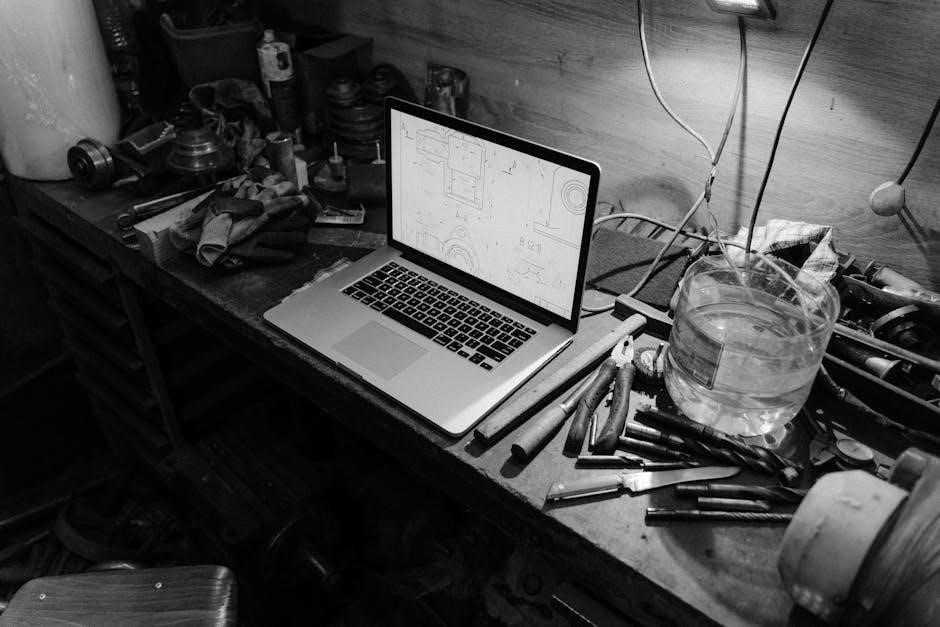


About the author